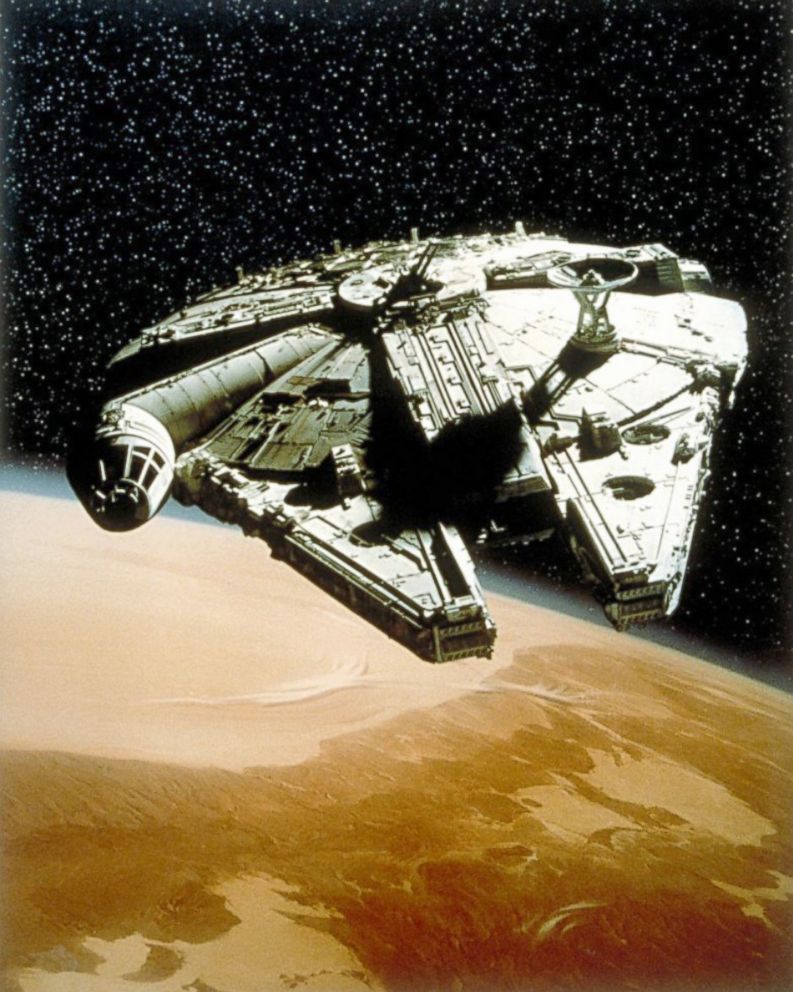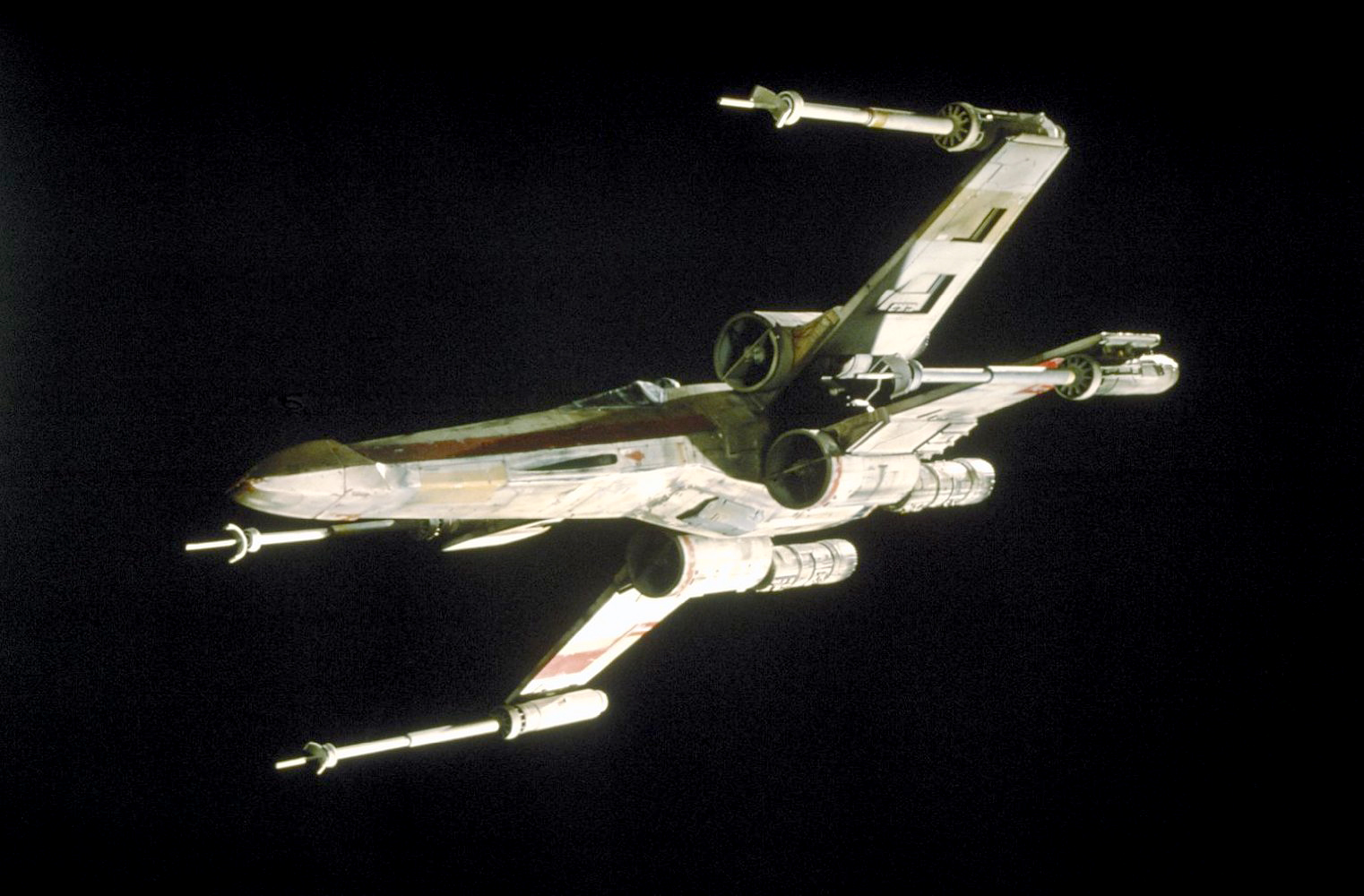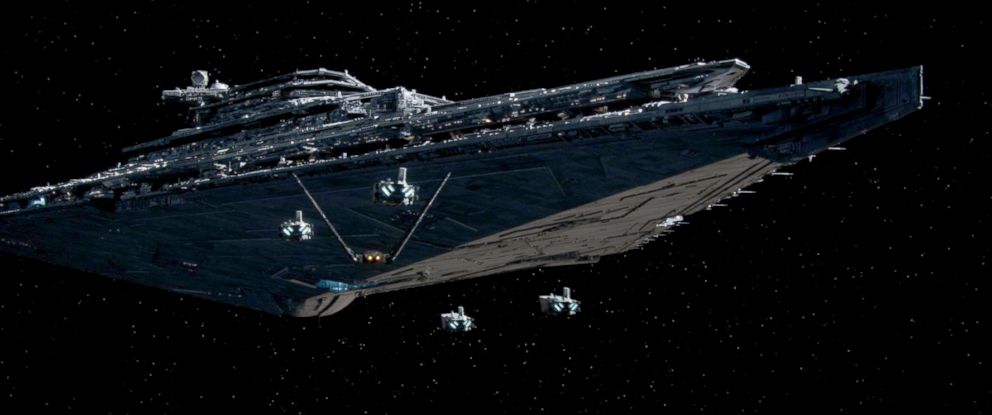How Classic 'Star Wars' Spaceships Were Recreated for 'Rogue One,' 'Force Awakens'
Lucasfilm’s visual effects studio takes you inside the movie-making magic.
— -- It’s no wonder the Millennium Falcon is the “fastest hunk of junk in the galaxy.” It’s part Ferrari.
“This is a Ferrari model kit,” said Russell Paul, showing off pieces used on the Falcon taken from a pile of plastic miniatures at Lucasfilm’s visual effects studio, Industrial Light & Magic. “It's an old Formula One car, a Ferrari 312.”

Paul, a model supervisor at ILM, told ABC News recently that fashioning digital versions of classic X-Wings, Y-Wings and Star Destroyers for new movies like “The Force Awakens” and “Rogue One” required artists to go back to the original 1970’s and 1980’s-era models for help.
“The traditional model shop did some amazing, amazing work,” Paul said. “And I think we really tried to respect that style of model making, and really tried to tell a story with details on our models as well.”
Like the Ferrari-enhanced Falcon, many spaceships from the original “Star Wars” trilogy were detailed using a variety of off-the-shelf model kits. ILM artists essentially had to reverse-engineer the models to figure out what parts were used, and where they came from. Paul said many of the model kits aren’t sold new anymore, and ILM had to scour sites like eBay to find them. Once they had the kits, artists could scan the plastic pieces and recreate the models in a computer.
“The Y-Wing is actually a Saturn V rocket kit,” Paul explained. ”This is the main fuselage of the rocket kit, but it actually was used directly to make the engines of a Y-Wing.”

If you know where to look, you can also spot pieces of a German World War II-era tank on the bridge of a Star Destroyer.
“I love the Star Destroyer,” Paul said. “It's just such an iconic design, and being able to take it to the next level and add some of that detail respectfully and really make it as I remember it was a real pleasure.”

For all this painstaking work, “Rogue One: A Star Wars Story” earned an Oscar nod for best visual effects, alongside the likes of "The Jungle Book" and "Doctor Strange."
Once the new digital models were finished, they were added to scenes like the climactic space battle in "Rogue One." Director Gareth Edwards used a cutting-edge ILM virtual camera system that allowed him to use what looks like an iPad connected to an Xbox controller to see and capture the action in a unique way.
“Gareth has a cinema verite style,” said John Levin, an ILM layout supervisor. “He likes to treat the film as if he's a documentarian walking around the scene. We put the camera in his hands, and he walks around. It's constantly recording. He finds a cool shot. He does it over and over until he perfects it. Next thing you know, we've got something in the movie.”
ILM engineer Mike Jutan said that improvisational technique led to the discovery of an iconic shot for an early "Rogue One" trailer -- the large dish being installed on the Death Star as Star Destroyers float by -- that was an Edwards favorite.
“We moved the sun a little bit for him,” Jutan said of the scene. “And you'd see this kind of beautiful shadow going across the side of the Death Star. It looked super-ominous. And he's like, ‘That's it!’ And the next day we tied it all up and shipped it off to be in the trailer.”




